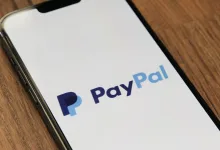
According to a report from cybersecurity researchers at Avanan, there are phishing scams that are using PayPal and Google Docs to steal people’s data. These scams are particularly advanced because they trick email security solutions by making it look like the emails are coming from legitimate services like PayPal or Google Docs.
In reality, the emails are being sent by hackers who are trying to steal sensitive information. It’s important to be vigilant and careful when it comes to emails and to double-check the sender’s identity before clicking on any links or providing any personal information.
The phishing emails are often designed to look like legitimate emails from PayPal or Google Docs, with convincing branding and messaging. The emails may ask the recipient to click on a link or provide personal information, such as login credentials or credit card details. If the recipient falls for the scam, their information could be used for fraudulent purposes, such as identity theft or financial fraud.

What makes these phishing scams particularly dangerous is that they are able to bypass email security solutions that are designed to detect and block suspicious emails. The hackers are using techniques like social engineering and email spoofing to make it appear as though the emails are coming from trusted sources. This means that even tech-savvy users could fall for the scam if they are not careful.
To protect yourself from these types of phishing scams, it’s important to be aware of the tactics that hackers use and to be cautious when opening emails or clicking on links. Always check the sender’s email address and look for any signs that the email may be fake or fraudulent. Additionally, use two-factor authentication and strong passwords to help prevent unauthorized access to your accounts.
In addition to being vigilant and cautious, there are some other steps you can take to protect yourself from these types of phishing scams. For example, you can enable security features like SPF, DKIM, and DMARC on your email account to help prevent email spoofing. You can also use email security solutions that are designed to detect and block phishing emails, such as anti-spam filters and email security gateways.
It’s also a good idea to educate yourself and others about the dangers of phishing scams. Make sure your family, friends, and colleagues are aware of the tactics that hackers use and encourage them to be cautious when opening emails or clicking on links.
Finally, if you do receive a phishing email, report it to the appropriate authorities. Most email providers have a mechanism for reporting suspicious emails, and you can also report phishing scams to organizations like the Anti-Phishing Working Group or the Federal Trade Commission.
By taking these steps, you can help protect yourself and others from the dangers of phishing scams that use PayPal and Google Docs as part of their tactics.



